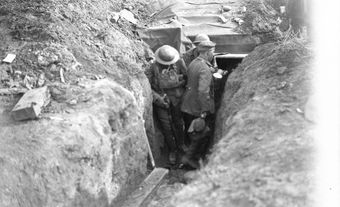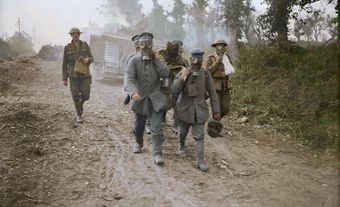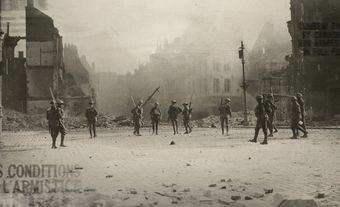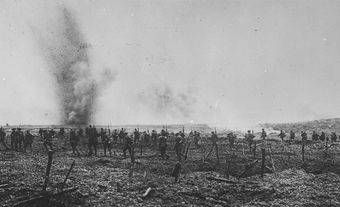John Bernard Croak, VC, coal miner, soldier (born 18 May 1892 in Little Bay, Newfoundland and Labrador; died 8 August 1918 near Amiens, France). During the First World War, Croak was awarded a posthumous Victoria Cross (VC) for his heroic actions during the Battle of Amiens.

Private John Bernard Croak was born in Newfoundland and Labrador, but moved to Cape Breton, Nova Scotia, with his family when he was only four years old.
(Courtesy Canadian Department of National Defence)
Early Life
John Croak was the son of James and Cecelia Croak. When he was four years old, his family moved from Newfoundland and Labrador to Nova Scotia and settled in New Aberdeen, now part of Glace Bay. He attended school there but left when he was 14 to work in the coal mine at the Dominion No. 2 Colliery in Glace Bay.
In early 1914, Croak went to Western Canada, where he did some trapping. On his way back to Cape Breton for a visit, he enrolled in the 55th (New Brunswick & Prince Edward Island) Battalion, Canadian Expeditionary Force (CEF) on 7 August 1915 at Camp Sussex, New Brunswick. A few days later, Croak joined the battalion at Camp Valcartier, Quebec, where he completed basic training.
War Service
John Croak departed from Montreal with his unit on the SS Corsican on 30 October 1915 and arrived in Britain on 9 November. The battalion was stationed at Canadian military camps in southern England, where it undertook additional training before deployment to the Western Front.
Croak had difficulty adjusting to military discipline. He had confrontations with military authorities on several occasions, including drunkenness (the most common offence among Canadian soldiers).
Western Front
The 55th Battalion did not serve on the Western Front. Instead, like the majority of CEF battalions, it was broken up in England to allocate its soldiers to other units. John Croak was transferred to the 13th (Royal Highlanders) Battalion — the famous Black Watch. At the time, the 13th Battalion was serving on the Western Front as part of 3rd Brigade, 1st Canadian Division in the Canadian Corps. Croak arrived at the Canadian Base Depot in France on 16 April, where he underwent additional training to prepare for the rigours of trench warfare. On 12 June, he joined the Black Watch at the front.
As one of the first Canadian units to see combat, the Black Watch was an experienced and battle-hardened unit by the time Croak joined it. He fought on the Somme, Vimy Ridge and at Passchendaele. The Canadian Corps then spent the first seven months of 1918 preparing for the next big Allied offensive.
Meanwhile, John Croak’s disciplinary problems continued. As his offences were committed at the front, they occurred “while on active service,” which resulted in more severe sentences.
Despite his checkered disciplinary record, Croak’s fellow soldiers respected him for his fighting abilities. Nineteen-year-old Charlie “Bubbles” Hughes served alongside Croak in A Company. According to him:
Now this Johnny Croak was a remarkable man. There was not a phoney bone in his body. He was a roly-poly guy, feared nothing… He always carried a revolver on his hip and I don’t think he would have been afraid to use it on anyone who crossed him … if you went out on a patrol or a working party with Johnny Croak, you’d come back.
Croak was obviously not a “parade ground” soldier; he was a fighter. He would have the chance to prove his fighting abilities in the next momentous battle for the Canadians.

Front line trenches near the village of Hangard from which the Canadians, including John Croak’s battalion, “jumped off” on 8 August 1918. (Photo taken April or May 1919)
(Courtesy Canadian Department of National Defence/Library and Archives Canada)
Battle of Amiens
“Canada’s Hundred Days” began with the Battle of Amiens on 8 August 1918 and ended with the 11 November Armistice. During this period, the Canadian Corps led the triumphant Allied advance from Amiens, France, to Mons, Belgium. The battles of Canada’s Hundred Days are arguably the most significant feat of arms in the history of the Canadian Army.
British military historian J.F.C. Fuller called the Battle of Amiens “the most decisive battle of the First World War.” The Germans had another name for it: “the Black Day of the German Army.”
At 4:20 a.m. on 8 August, the Canadians advanced in a dense ground fog on a 7.8km front east of Amiens. They were accompanied by a massive artillery bombardment and supported by tanks. Soon, Canadian soldiers were engaging those Germans who had survived the opening artillery barrage.
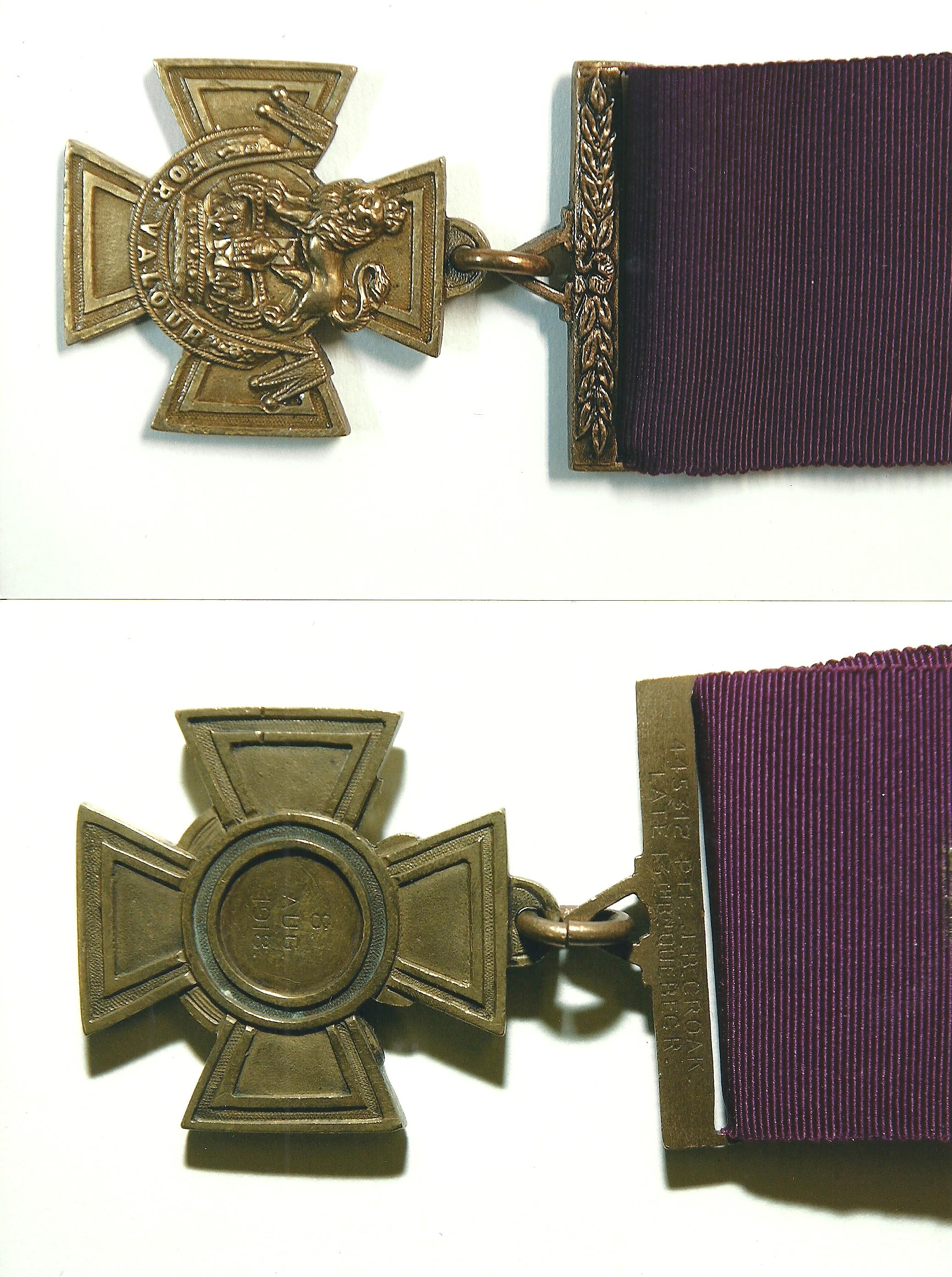
The Victoria Cross awarded posthumously to John Croak.
(Courtesy Army Museum Halifax Citadel)
Heroism at Hangard Wood
The Highlanders’ first obstacle was Hangard Wood. The citation for John Croak’s Victoria Cross explains what happened next:
…having become separated from his section he encountered a machine gun nest, which he bombed and silenced, taking the gun and crew prisoners. Shortly afterwards he was severely wounded, but refused to desist. Having rejoined his platoon, a very strong point, containing several machine guns, was encountered. Private Croak … dashed forward alone and was almost immediately followed by the remainder of the platoon in a brilliant charge. He was the first to arrive at the trench line, into which he led his men, capturing three machine guns and bayonetting or capturing the entire garrison. The perseverance and valour of this gallant soldier, who was again severely wounded, and died of his wounds, were an inspiring example to all.
Just before he died, Croak allegedly said to a friend, “Do you wish to show your gratitude? Kneel down and pray for my soul.” While it seems unlikely that the rough-and-tumble Croak made such a statement, these words are inscribed on his tombstone in Hangard Wood British Cemetery, not far from where he was killed.

John Bernard Croak's grave in Hangard Wood British Cemetery.
(courtesy John Boileau)
Memory
John Croak’s mother received his posthumous Victoria Cross from the lieutenant governor of Nova Scotia at the province’s Government House in a ceremony on 23 November 1918. It was held by the family for several years until it was purchased by the Canadian War Museum in 1976. Today it is on display in the Army Museum Halifax Citadel.
There are several tributes to Croak in Cape Breton. A school, park and a branch of the Royal Canadian Legion (since closed) were named after him.

 Share on Facebook
Share on Facebook Share on X
Share on X Share by Email
Share by Email Share on Google Classroom
Share on Google Classroom
